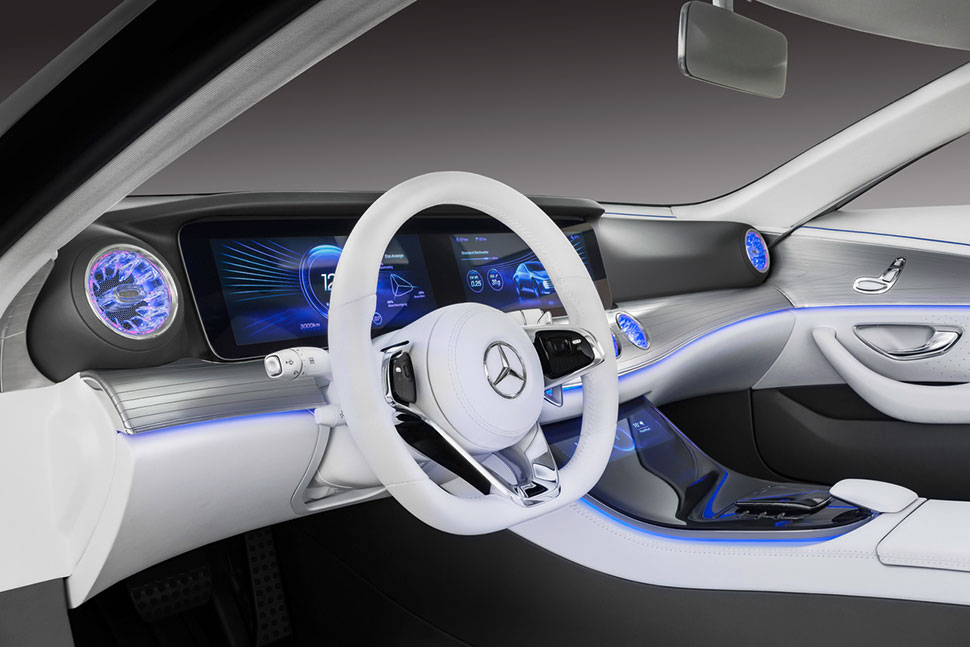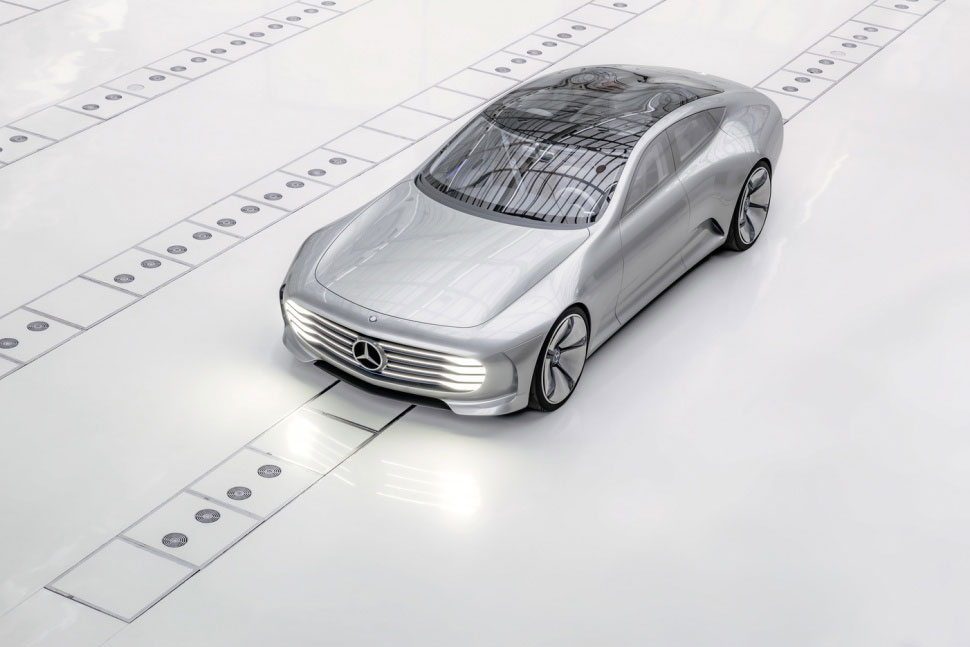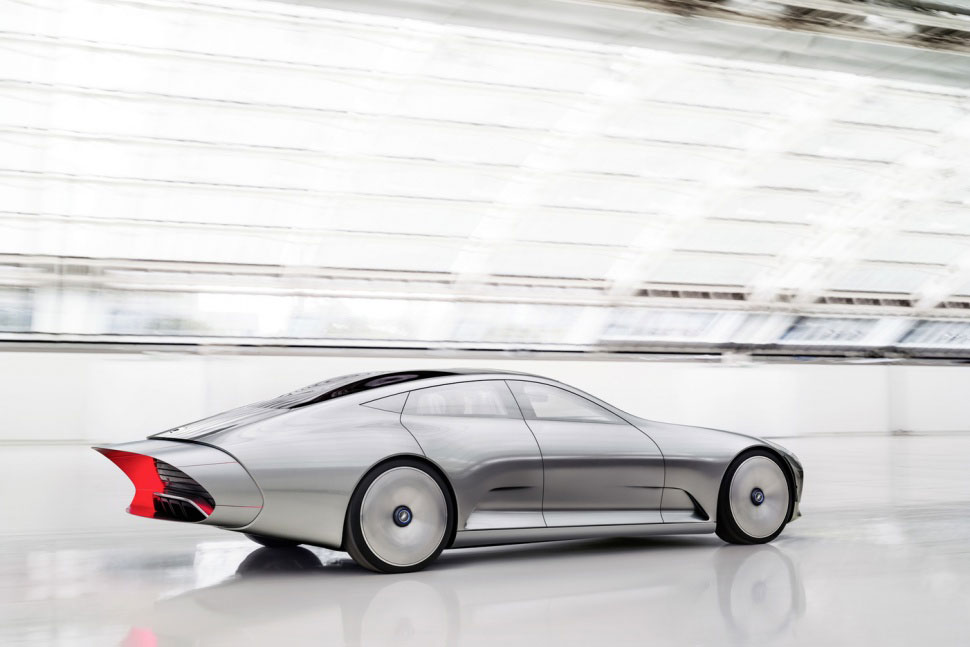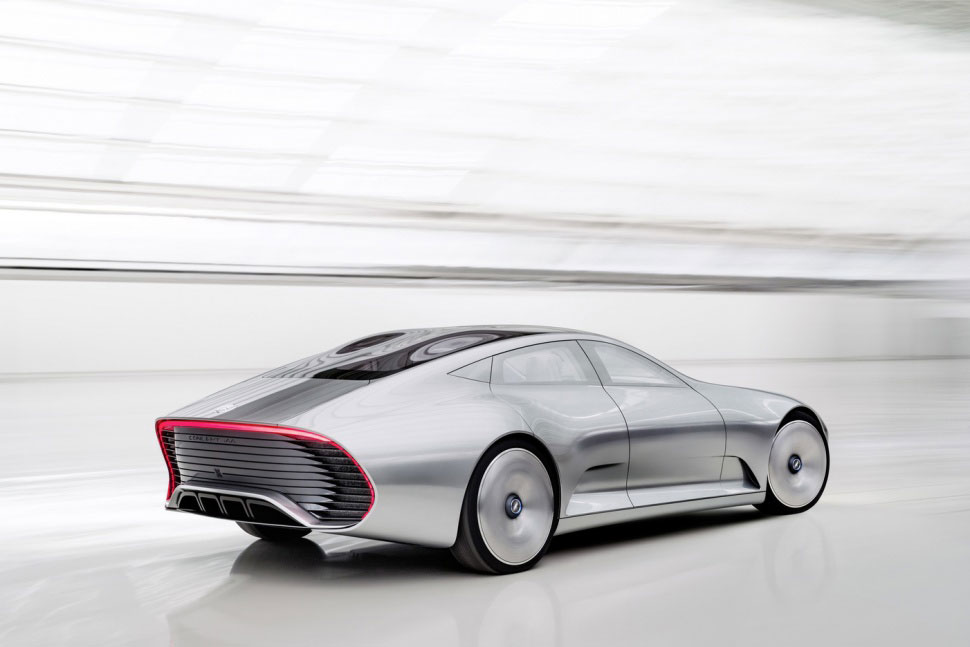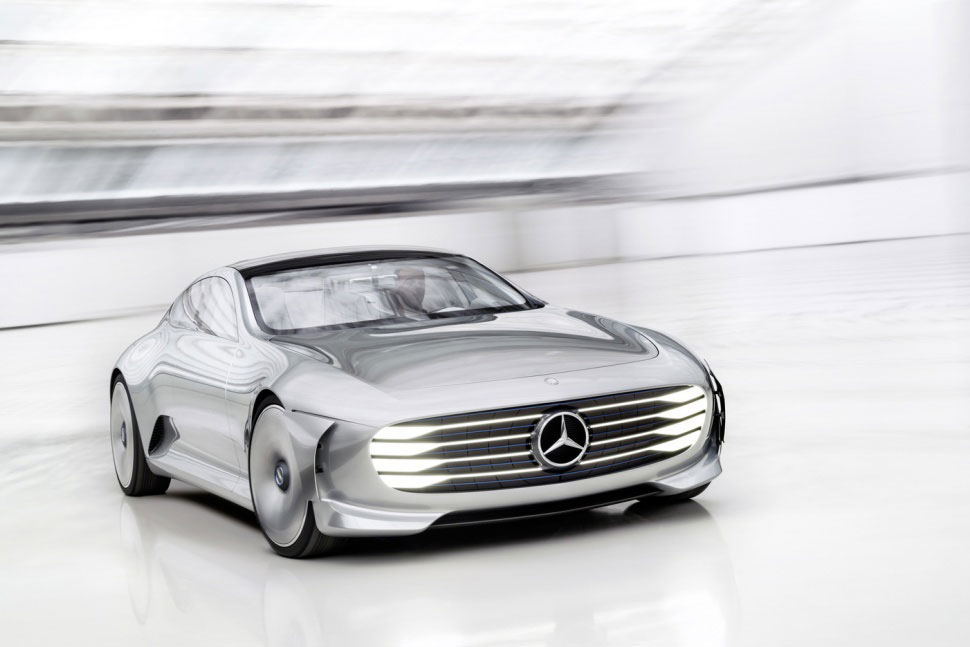The lush forests of Pandora. Tony Stark’s invincible suit. Striking interstellar spacecraft. All made possible through the use of powerful computer graphics software, a tool that until recently was a stranger to the arena of automobiles.
Mercedes-Benz’s Concept IAA changed all that, not with its adaptive aerodynamic body shell, but with what lies beneath. Inside the vehicle’s seamless silver exterior sits a pristine, futuristic passenger cabin, one adorned with Mercedes’ next-generation user interface called Project Dash. You’ve undoubtedly seen elements of Project Dash before, but they were probably on a much larger screen.
Related link: Mercedes-Benz’s Concept IAA changes shape with the push of a button
“We essentially took the software used to make Gravity, Avatar, and Iron Man, and the same lines of codes are running in the car’s dash,” said Jack Greasley, Head of New Technology at visual effects firm The Foundry. Hollywood often borrows from the automotive world for stunts and product placement, but now, the automotive world is taking something back.
You’ve undoubtedly seen elements of Project Dash before, but they were probably on a much larger screen.
Project Dash was born from a collaboration between Mercedes and The Foundry, and it layers a bespoke version of the British company’s 3D modeling and software package — called MODO — over a powerful NVIDIA processor. The result is real-time, Hollywood-grade vehicle renderings inside the car, a feature absent from even the most extravagant luxury machines. From the Concept IAA’s two-part display, you’re able to interact with it from a bird’s eye view, highlighting individual components, identifying mechanical issues, visualizing different designs, and even reflecting the surrounding environment with eye-opening detail.
“The key thing about the move toward high-quality, almost immersive 3D graphics is that cars are very complicated nowadays,” Greasley told Digital Trends at Mercedes’ R&D center in Sunnyvale, California. “If you’re trying to diagnose an issue or find out what’s going on with the car, with a system like this you can glance at the screen and see that the tire is at low pressure or see that you’ve got the trunk open.”
“The aerodynamic transformation [of Concept IAA] is an extreme but great example of that,” he continued. “If you wanted to know what was happening, what changes, the transfer of information made to the car, I don’t know any other way to represent that other than a full 3D models. I can’t imagine drilling down through three levels of submenus to find that the left wing is now 0.3 percent more efficient than it was before. This richness of detail coming from the car means that we need an equivalent richness of display.”
Unfortunately, Mercedes is tight-lipped on whether or not this feature will show up in a future road-going product.
Before heading to The Foundry, Greasley wrote software for Weta Digital, a visual effects outfit with credits in The Lord of the Rings, Dawn of the Planet of the Apes, The Avengers, Godzilla, and countless others. Over his tenure in the industry, he’s seen the standards of consumers change. He recently witnessed a group of youths become increasingly befuddled by a magazine, attempting to swipe and pinch the pages as if they were a tablet.
“To younger generations, a magazine is an iPad that doesn’t work properly,” he said. “If you can’t reach the level of expectation, you’re failing.”
Project Dash reaches that expectation not just by looking cool, but by glimpsing into the next generation of in-car entertainment and diagnostics equipment. In its current form, the interface could help automotive designers, engineers, and even car buyers visualize the details of a vehicle with astonishing accuracy, but with this type of processing capacity on hand, the sky’s the limit.
Related link: Mercedes-Benz F 015 Luxury in Motion concept is a self-driving green machine
“There’s some crazy stuff that I want to try, such as getting the cameras around the car,” Greasley explained. By stitching together the feeds from Around View Monitors onto the 3D model, you could have something along the lines of a real-world Photoshop tool, one that uses the environment you’re actually in to paint a truly immersive picture.
We essentially took the software used to make Gravity, Avatar, and Iron Man, and the same lines of codes are running in the car’s dash.”
“You could actually have the sodium light coming down on you from above. You can have daytime view and nighttime view. Things like in-car color customization. Also novel ways of presenting proximity. Now we’ve got all this power and we can go and do some really fun stuff with it.”
Even for someone who’s spent years bringing fantastic alien worlds and unimaginable scenarios to life on the big screen, Greasley is unapologetically enthusiastic about The Foundry’s partnership with a powerhouse German automaker. It’s a new endeavor for him and his company, but it opens the door to an unprecedented level of customization and utility. That’s something we can all appreciate, gearheads or not.
“Sitting in the car for the first time, the hairs on the back of my neck stood up,” Greasley said. “It’s really cool.”
